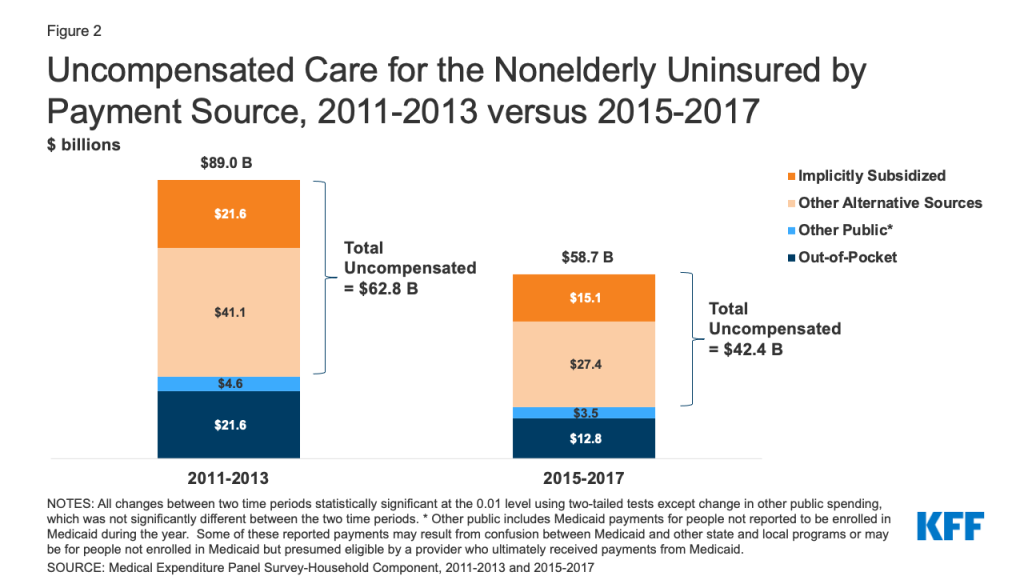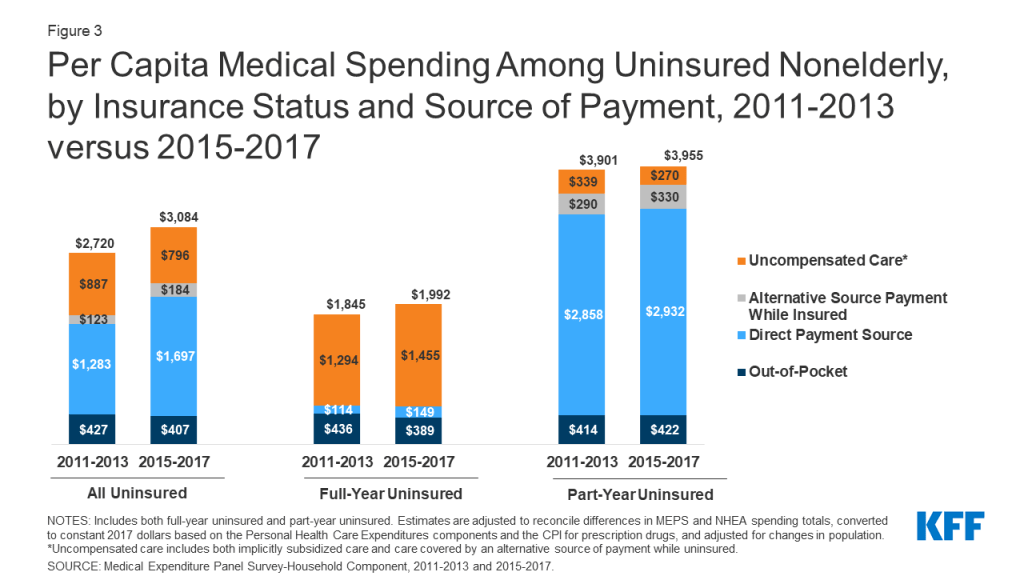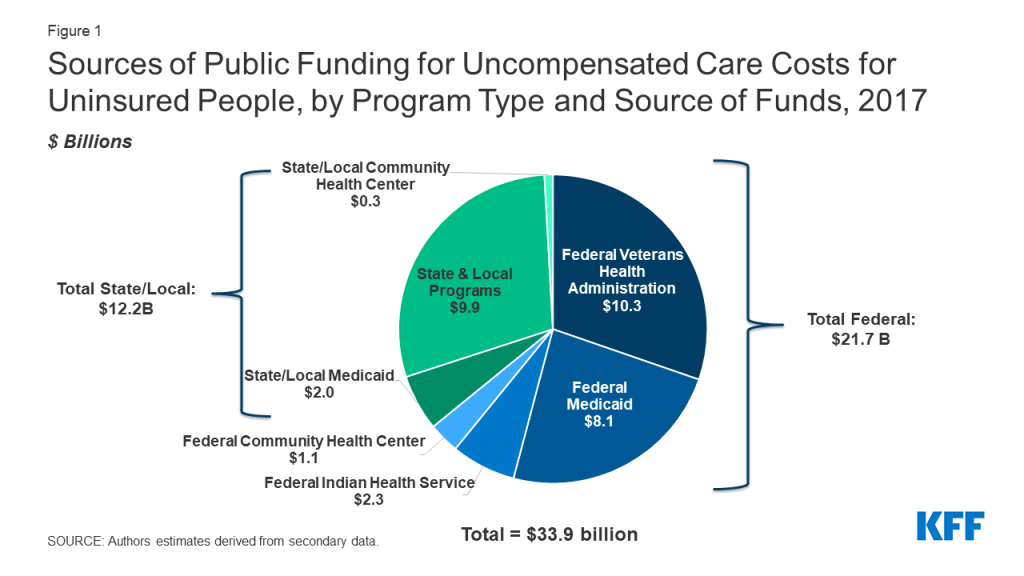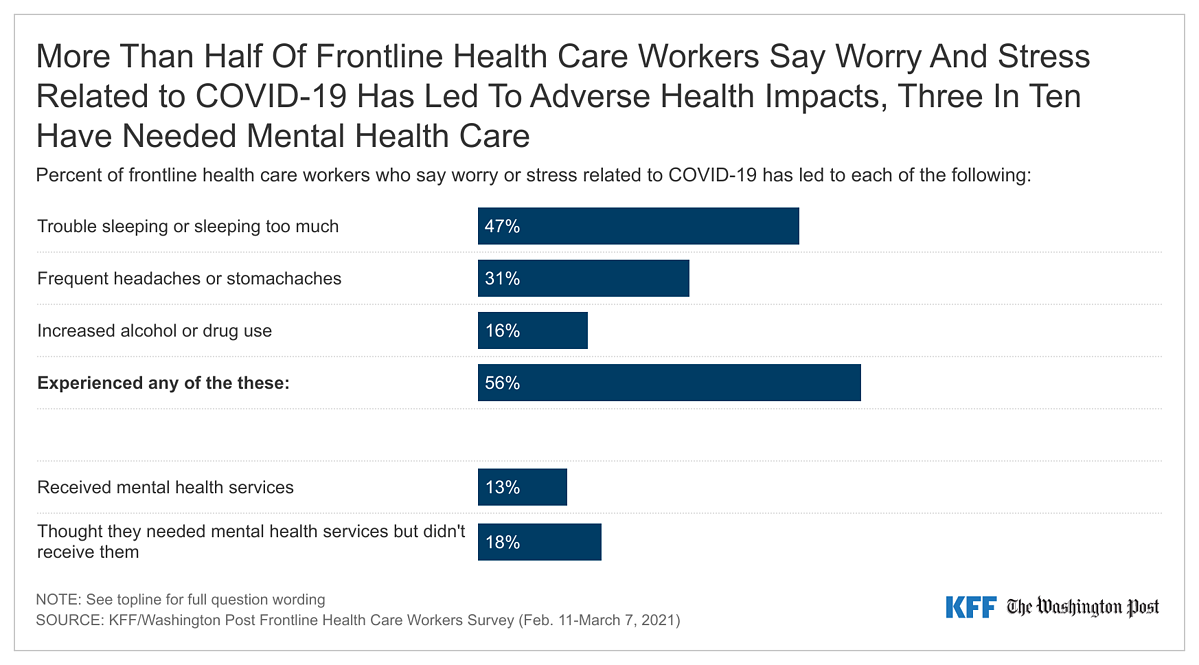Key Questions About COVID-19 Vaccine Mandates
Key Takeaways
The extent to which states and/or employers might adopt COVID-19 vaccine mandates remains an open question but could affect the distribution and uptake of vaccinations. This is likely to become a more prominent issue over time, as the need to vaccinate a large share of the U.S. population becomes more urgent in the face of variants and reluctance by some to get vaccinated, and if any of the vaccines which currently operate under emergency use authorization (EUA) are fully approved by the Food and Drug Administration (FDA). This issue brief explains the legal basis for vaccine mandates by the federal government, states, and private employers; highlights considerations for mandates while COVID-19 vaccines are subject to an EUA; and discusses mandate exemptions based on disability or religious objection. Key takeaways include the following:
- The federal government’s authority to institute a general vaccine mandate is unclear, and has not yet been tested in the courts, though it is likely limited at best.
- States’ authority to mandate vaccines to protect public health is well-established. Currently, all states require vaccines for school attendance, while state vaccine requirements for health care workers vary. More generally, though, states do not use mandates for adult vaccination and have thus far said they are not mandating COVID-19 vaccination
- Some private employers require influenza vaccines for employees in health care settings, unless prohibited by state law, and some employers and universities have already instituted mandates for COVID-19 vaccination for employees and/or students; at the same time, several states have sought to limit their ability to do so.
- More generally, however, it is unclear whether COVID-19 vaccines can be mandated while operating under an EUA, and courts have not yet ruled on this issue.
- When in place, under federal law, vaccine mandates may be subject to exemptions based on disability or religious objection.
As COVID-19 vaccination efforts progress, it will be important to monitor any changes in government or employer policy as well as public opinion on vaccine mandates.
Introduction
The extent to which states and/or employers might adopt COVID-19 vaccine mandates remains an open question but could affect the distribution and uptake of vaccinations. A substantial share of the population must acquire immunity, either through vaccination or previous infection, in order to get the pandemic under control. With several vaccines available for emergency use in the U.S. and distribution efforts underway, policymakers and public health officials are increasingly focusing on ways to accelerate the pace and maximize the extent of vaccine uptake. These efforts include increasing vaccine supply and relaxing eligibility requirements, public education and outreach campaigns, ensuring the accessibility of vaccine administration sites, job-based incentives, and even mandates. Indeed, COVID-19 vaccine mandates are likely to become a more prominent issue as soon as any one of the current vaccines operating under an EUA is approved and licensed by the FDA.
Public opinion on such mandates is mixed, with our surveys showing about half of the public saying employers should be allowed to require vaccination for COVID-19 (51%) and 45% saying they should not be allowed to do so. While vaccine enthusiasm is rising in the U.S., with more than 6 in ten saying they have already or plan to get vaccinated as soon as possible, there is a small share who say they will only do so if required. This issue brief explains the legal basis for vaccine mandates by the federal government, states, and private employers; highlights considerations for mandates while the COVID-19 vaccine is under an EUA; and discusses mandate exemptions based on disability or religious objection.
Can the federal government mandate vaccines?
The federal government’s authority to institute a general vaccine mandate is unclear, and has not yet been tested in the courts, though it is likely limited at best. The Commerce Clause of the U.S. Constitution gives Congress the power to regulate commerce between states as well as with foreign countries. Drawing on this authority, the Public Health Service Act (PHSA) authorizes the HHS Secretary to adopt quarantine and isolation measures to prevent the spread of communicable disease among states but does not specifically mention federal vaccine mandates. Read broadly, the PHSA might allow the federal government to mandate vaccines to prevent the transmission of infectious disease between states or from foreign countries, though such measures have not been adopted – or reviewed by courts – to date. It is clear that the federal government does have authority to mandate vaccines for members of the military, and those targeted mandates have been upheld by courts. In addition, federal law mandates certain vaccinations for immigrants seeking to enter the U.S. General vaccine mandates, however, are generally within the purview of state and local governments, as explained below, with the federal government playing a supporting role. For example, the increase in the number of states requiring vaccination to attend school is attributed to “urg[ing]” from the CDC after measles outbreaks in the 1960s. Otherwise, the federal government’s public health efforts have been largely focused on quarantine and isolation, rather than vaccine mandates.
Can state governments mandate vaccines?
The U.S. Supreme Court upheld a state vaccine mandate over a century ago, in a case setting out the legal test still applied today. The vaccine mandate in that 1905 case, Jacobson v. Massachusetts, is based on states’ broad authority to regulate individual rights to protect the general health, safety, morals, and welfare of society as a whole, known as the police power. Jacobson involved a city board of health law requiring all adults over age 21 to be vaccinated against smallpox during an outbreak. The city vaccination mandate was adopted pursuant to a state law that authorized local boards of health to “require and enforce” vaccination if “necessary for the public health or safety.” An individual who was fined for refusing to be vaccinated challenged the law, citing general concerns about the vaccine’s safety and efficacy. The Court deferred to the legislature’s judgment that vaccination was a safe and effective means of preventing smallpox and upheld the law as a reasonable regulation of public health and safety. The Court noted that individual constitutional rights are not absolute in all circumstances but instead are subject to “manifold restraints to which every person is necessarily subject for the common good.” The Court concluded that “upon the principle of self-defense, of paramount necessity, a community has the right to protect itself against an epidemic of disease which threatens the safety of its members.”
Today, all states have school vaccination requirements for children, subject to exemptions discussed below. State and local government authority to condition school attendance on vaccination was upheld by the Supreme Court in a 1922 case, Zucht v. King. That case was brought on behalf of an unvaccinated child who was excluded from school, challenging a city ordinance that required proof of vaccination to attend. The Court ruled that the vaccine mandate was reasonable and referred to Jacobson as having “settled that it is within the police power of a state to provide for compulsory vaccination.” Such school mandates are seen as having played a “major role in controlling rates of vaccine-preventable diseases in the United States.”
Current state vaccination laws for adults are focused on health care workers and patients in health care facilities, rather than the general population. State vaccination mandates for health care workers vary but generally include the requirement to offer certain vaccines, and in some cases document employee vaccination status (subject to exemptions described below). For example, 18 states require flu vaccine to be offered to hospital staff and/or require hospitals to report the status of employee vaccination to the state, and 15 states have measles, mumps, and rubella vaccination laws for hospital health care workers.
Can private employers mandate vaccines?
Some private employers require vaccines, such as for influenza, for employees in health care settings. States may prohibit vaccine mandates as a condition of employment and instead require that employees have the ability to opt out. Employers also may be subject to collective bargaining agreements that require them to negotiate with employee unions before imposing a vaccine mandate as a condition of employment. Employer vaccine mandates are subject to exemptions based on disability or religious objection as explained below.
How does the FDA emergency use authorization affect COVID-19 vaccine mandates?
It is unclear whether COVID-19 vaccination could be legally mandated while the FDA’s EUA is in place. Current mandates apply to vaccines that have been fully approved by the FDA. By contrast, COVID-19 vaccines have been authorized under the FDA’s temporary emergency use authority. The EUA statute provides that individuals must be informed “of the option to accept or refuse administration of the product, of the consequences, if any, of refusing administration of the product, and of the alternatives to the product that are available and of their benefits and risks.” Some commentators have interpreted this provision to mean that individuals cannot be required to receive a vaccine that is subject to an EUA. Others have questioned whether the reference to “consequences” of refusing a vaccine subject to an EUA includes not only potential health consequences but also other adverse outcomes such as loss of employment. The legislative history does not contain any references to mandates for vaccines under EUA. The EUA law was created after the September 11th terrorist attacks, and to date, courts have not interpreted this provision.
In addition to the legal uncertainty, some commentators have raised ethical questions about mandating a vaccine that is subject to EUA. The EUA authority requires less evidence of safety and efficacy compared to full FDA approval (usually based on the duration of safety and efficacy data available). Specifically, an EUA is permitted during a public health emergency, if the FDA determines that it is reasonable to believe the vaccine “may treat or prevent” the disease, the known and potential benefits outweigh the known and potential risks, and no approved adequate available alternative exists (emphasis added). By contrast, full FDA approval involves a finding that the vaccine is safe, effective, and pure. For COVID-19 vaccines, the FDA has set a high standard for determining whether to grant an EUA, including requiring data from at least one Phase 3 clinical trial that demonstrates the vaccine’s safety and efficacy “in a clear and compelling manner” and setting minimum efficacy and safety requirements. At least one vaccine manufacturer has indicated that it now has enough safety and efficacy data to submit an application for full approval to the FDA.
What is the status of COVID-19 vaccine mandates to date?
Neither states nor the federal government have mandated vaccination for COVID-19 to date, though some employers have done so. If state websites refer to vaccine mandates, they tend to do so to clarify that no requirement to receive a COVID-19 vaccine is in place. In addition, some states are considering legislation that would prohibit employers from adopting COVID-19 vaccine mandates for employees generally or limit employer vaccine mandates to only employees working in health care settings. A few states are considering legislation that would prohibit other entities, such as schools or private businesses, from conditioning attendance or services on receipt of a COVID-19 vaccine. Absent state prohibitions on vaccine mandates, some employers have adopted COVID-19 mandates for their employees. So far, news and other reports suggest employer mandates for COVID-19 vaccines do not appear to be widespread and tend to be limited to health care settings, such as a health system in Texas, settings with congregate and/or medically vulnerable populations such as nursing homes, assisted living facilities, and at least one county detention center (discussed below), and some colleges and universities.
To date, at least one federal lawsuit has been filed challenging an employer’s COVID-19 vaccine mandate on the grounds that vaccines are still under emergency use authorization. The plaintiff in Legaretta v. Macias works for a New Mexico county detention center and is challenging a county directive requiring first responders to receive the COVID-19 vaccine “as a condition of ongoing employment.” He argues that the vaccination mandate is illegal because it conflicts with the federal law regarding EUAs. On March 4, 2021, the trial court judge refused to enter a temporary restraining order, finding that the plaintiff had failed to show “immediate or irreparable injury” because he had not been fired or disciplined for failing to take the vaccine.
So far, most colleges and universities have been encouraging but not mandating COVID-19 vaccines for students, though several, starting with Rutgers University and Cornell University, recently announced that they will require students to be vaccinated against COVID-19 for attendance in Fall 2021. Both universities allow for exemptions based on disability and religious objection (discussed below). Other colleges and universities are also beginning to announce similar policies, in some cases for staff and faculty as well.
When must exemptions from vaccine mandates be considered?
In December 2020 guidance, the Equal Employment Opportunity Commission (EEOC) stated that employers may require employees to provide proof of COVID-19 vaccination without implicating the Americans with Disabilities Act (ADA), though the guidance on this point does not address the vaccines’ current EUA status. According to the EEOC, such an inquiry is allowed because it is not likely to elicit information about a disability. However, if an employer asks questions that are likely to elicit disability-related information, such as why an employee did not receive a vaccine, the ADA would apply, and the employer would have to show that the questions are “job-related and consistent with business necessity.”
However, vaccine mandates are subject to reasonable accommodation requests under the Americans with Disabilities Act (ADA) and Section 504 of the Rehabilitation Act. Specifically, Title II of the ADA applies to state and local governments, Section 504 applies to the federal government in its role as an employer, and Title I of the ADA applies to private employers. According to the EEOC guidance, if an employer mandates vaccines, and an employee indicates they cannot receive a vaccine due to a disability, the employer generally must consider whether a reasonable accommodation is warranted. Reasonable accommodations could include measures such as temporary job restructuring, permission to work from home, or distancing from coworkers or customers and should be identified using a “flexible interactive process” involving the employer and employee. Employers do not have to offer reasonable accommodations that create an “undue hardship” such as “significant difficulty or expense.” The EEOC guidance notes that the “prevalence in the workplace of employees who already have received a COVID-19 vaccination and the amount of contact with others, whose vaccination status could be unknown, may impact the undue hardship consideration.” However, the EEOC guidance does not directly address whether an employer can mandate vaccination while the COVID-19 vaccine is subject to an EUA (discussed above).
An employer does not have to provide a reasonable accommodation to employees who pose a “direct threat.” A direct threat is a “significant risk of substantial harm” to their own or others’ health or safety, which cannot be reduced or eliminated by a reasonable accommodation. In determining whether there is a direct threat, employers must conduct an individualized assessment that considers (1) the duration of the risk, (2) the nature and severity of the potential harm, (3) the likelihood that the potential harm will occur, and (4) the imminence of the potential harm. The EEOC guidance confirms that a direct threat includes the “determination that an unvaccinated individual will expose others to the virus at the worksite.” However, the EEOC guidance also notes that an employer “cannot exclude the employee from the workplace – or take any other action – unless there is no way to provide a reasonable accommodation (absent undue hardship) that would eliminate or reduce this risk so the unvaccinated employee does not pose a direct threat.” If it is not possible to reduce the direct threat to an acceptable level, the EEOC guidance provides that an “employer can exclude the employee from physically entering the workplace.” However, the EEOC guidance also notes that an employer cannot automatically fire the employee and instead must first consider reasonable accommodations such as telework.
Employer vaccine mandates also are subject to religious accommodations under Title VII of the Civil Rights Act, though courts have held that state vaccine mandates (such as those for school attendance) are not constitutionally required to provide religious exemptions. Title VII requires employers to accommodate an employee’s sincerely held religious beliefs that conflict with job requirements unless the accommodation is an undue hardship on the conduct of the employer’s business. In general, the EEOC guidance notes that an employer should accept an employee’s statement about the sincerity of their religious belief. An undue hardship exists when there is more than a de minimus cost or burden on the employer. If the employer cannot reasonably accommodate an employee who is unvaccinated due to religious belief, the EEOC guidance provides that the employer may exclude the employee from the physical workplace but may not automatically fire the employee.
Looking Ahead
As COVD-19 vaccination efforts progress, it will be important to continue to monitor changes in government or employer policy as well as public opinion regarding vaccine mandates; there are likely to continue to be some who will not get vaccinated, including those who will only do so if required in some way. Court rulings also may affect the viability or scope of vaccine mandates adopted by employers or other entities, as well as the exemptions available to people with disabilities or religious objections, particularly given the uncertain legality of mandates while an EUA is in place. It is clear that widespread take-up of COVID-19 vaccines is necessary to get the pandemic under control. However, even if mandates ultimately are determined to be permissible, policymakers also will likely consider whether mandates are the most effective means of accomplishing this goal.





